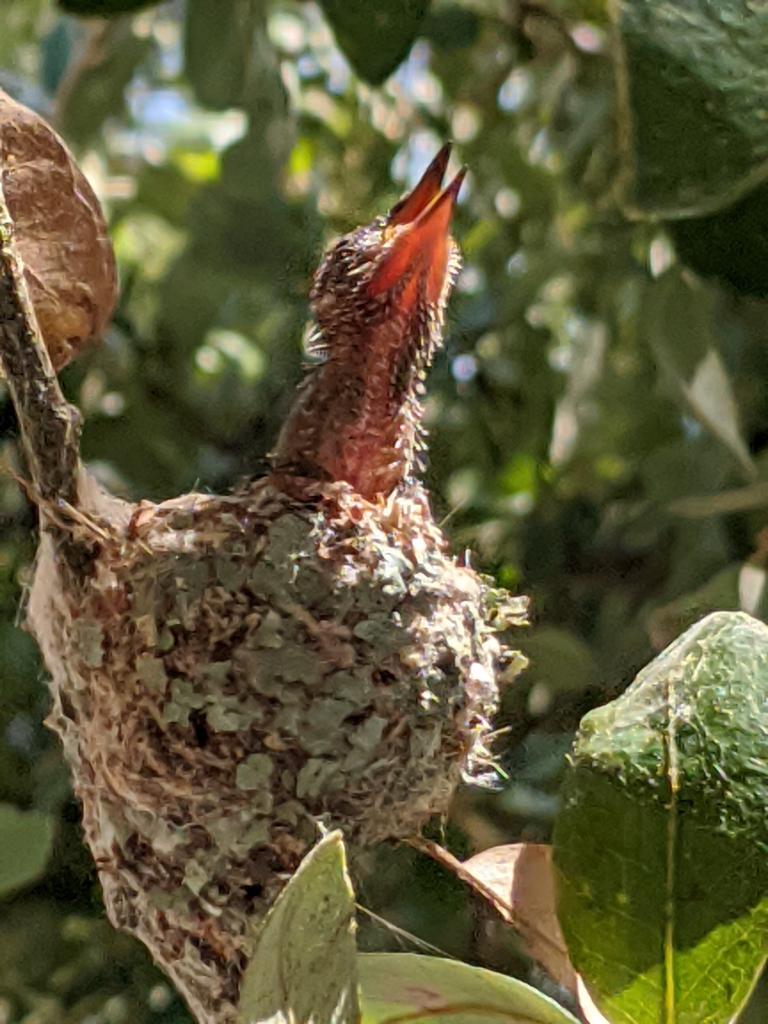Whilst in Coryell County TX on a weekend jaunt, we were fortunate enough to see a live hummingbird’s nest. We visited friends but social distancing was the order of the day so we sat on strategically placed lawn chairs, facial masks affixed — all of us sitting under a scrub oak. Although it was hot, the shade from the tree made a big difference.
We saw an adult hummingbird buzzing about the oak tree. This was strange, as there were no nearby flowers to sip from so far as we could see. Why was this bird flitting around the tree so much? After a few more seconds, we heard a tiny peep and spied a nestling in a little cup-shaped nest. Now we know why the adult hummingbird was hanging so close to us and the tree — she was there to feed her nestling! We were nothing but a possible threat and distraction to this little family…
We took this short video of the little one peeking out of the nest. Later, our family friends Robert and Suzanne took a still photo of the nestling (see thumbnail).
After about three weeks, the nestling will fly off and start foraging on its own. Once it leaves the nest, the mother may continue feeding it for a short while until it can fend for itself.
Hummingbirds are the world’s smallest birds, no more than 3 to 5 inches long. They are nectarivores, meaning they subsist mostly on the sugary nectar produced by flowering plants. You’ll find them only in the Americas and the Caribbean. There is one species endemic to North America that’s been seen outside this range in the Chukchi Peninsula of Russia (the rufous hummingbird), but otherwise they are a phenomenon of North and South America.
Many hummingbirds will winter in Mexico or Central America. These migrate Northward to breed in the Western and Southern states in the early Spring. Later in the spring, some of these birds will push further North. Not all hummingbirds migrate — some species live along the upper Pacific coast and parts of California. The ones that do migrate can travel more than 20 miles per day!
A hummingbird’s nest is constructed using bits of lichen, spider silk and shredded bits of leaves. According to field studies, the mother feeds the baby tiny bugs and nectar. She does this by placing her bill into the nestling’s mouth and then spitting up the food into the baby’s crop. (fathers don’t help in this process).
If you are interested in attracting Hummingbirds to your porch or lawn, you can hang up hummingbird feeders. A safe recipe for feeding them is four parts of water for one part sugar. For example, measure out four cups of water into a container and mix in one cup of sugar. Don’t add anything else such as dye or honey. Simply fill your feeders with this mixture and if there are hummingbirds in the area, they’ll eventually find it!

